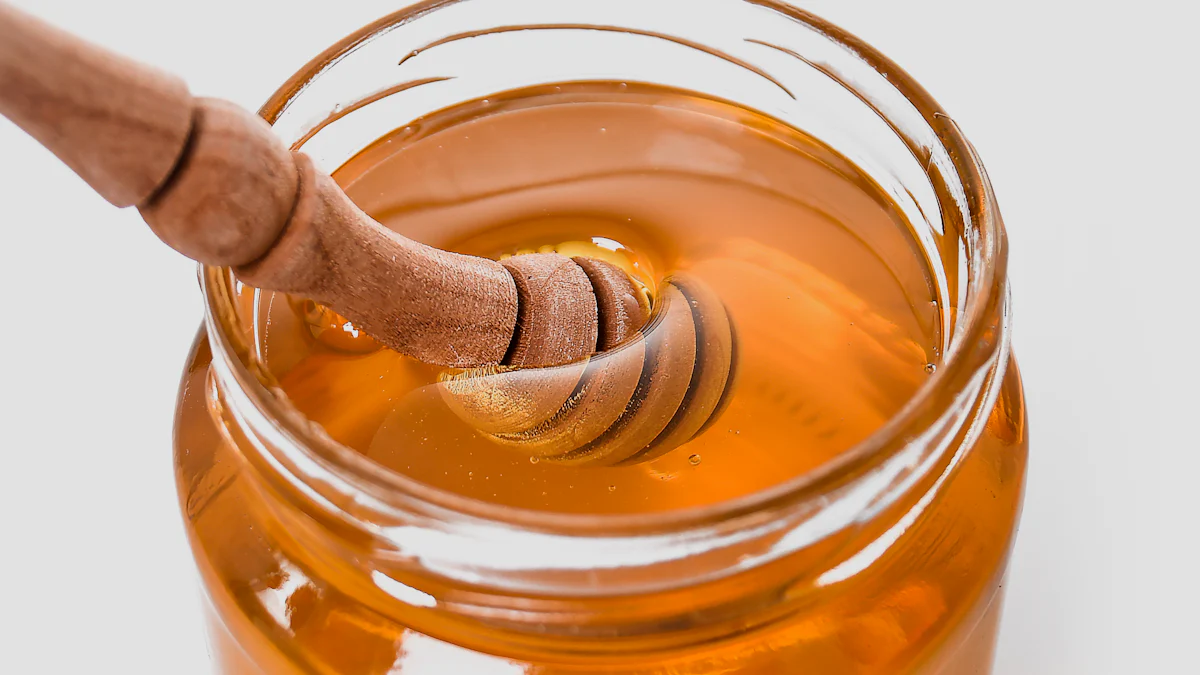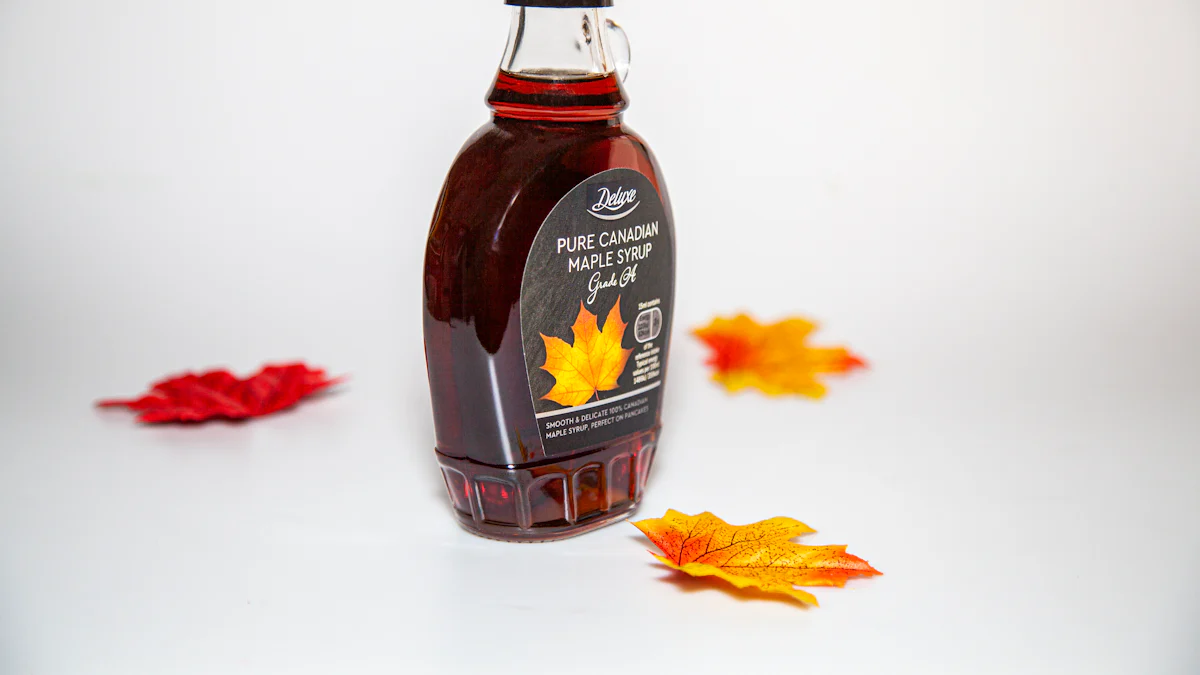
Welcome to the Sweet World of Homemade Syrup
Welcome to the delightful world of homemade syrup, where you can indulge in the sweet satisfaction of crafting your own flavorful concoctions. In this section, we'll explore what syrup is and why making it at home can be a rewarding and delicious endeavor.
What is Syrup and Why Make it at Home?
The Joy of Crafting Your Own Flavors
Making syrup at home offers a unique opportunity to unleash your creativity and tailor flavors to your liking. Whether it's infusing classic maple syrup with hints of vanilla or creating a vibrant blueberry-infused syrup, the joy of experimenting with different flavor combinations is unparalleled. Syrup making allows for endless possibilities, enabling you to customize each batch to suit your taste preferences and culinary creations.
The Benefits of Homemade Over Store-Bought
Homemade syrup boasts numerous advantages over its store-bought counterparts. By making your own syrup, you have complete control over the quality and purity of the ingredients used. You can opt for natural sweeteners like honey or agave nectar, steering clear of artificial additives commonly found in commercial syrups. Additionally, crafting syrup at home allows you to reduce sugar content, catering to dietary preferences without compromising on taste.
What You'll Need to Get Started
Basic Ingredients and Equipment
To embark on your homemade syrup-making journey, gather basic ingredients such as sugar, water, and any additional flavorings like fruits or herbs. Essential equipment includes a saucepan, stirring utensil, and storage containers for your finished creations.
Setting Up Your Kitchen for Syrup Making
Prepare your kitchen by ensuring a clean and organized workspace. Clear ample counter space for easy maneuvering during the cooking process. Having all necessary ingredients and equipment within reach will streamline the syrup making experience.
By venturing into the realm of homemade syrups, you open doors to an array of delectable possibilities while embracing natural ingredients that cater to personal tastes and preferences.
The Basics of Making Syrup at Home
Now that we've explored the allure of homemade syrup, let's delve into the fundamental techniques for creating your own delectable concoctions. In this section, we'll cover the essential methods for making simple syrup and fruit syrup, along with creative variations to infuse your syrups with delightful flavors.
How to Make Simple Syrup
The Basic Recipe
To make a batch of simple syrup, you'll need to combine equal parts of water and sugar in a saucepan. Place the saucepan over medium heat and stir the mixture until the sugar completely dissolves. Once dissolved, remove the pan from the heat and allow the syrup to cool before transferring it to a clean jar or bottle for storage. This versatile sweetener serves as a base for an array of culinary creations, from sweetening beverages like iced tea and cocktails to drizzling over desserts.
Flavor Variations: Adding Fruits and Herbs
Elevate your syrup-making prowess by infusing simple syrup with tantalizing flavors derived from fruits and herbs. For instance, you can enhance your syrup with the natural sweetness of strawberries, blueberries, or citrus fruits. Alternatively, experiment with aromatic herbs such as mint, basil, or lavender to impart unique undertones to your syrups. These flavorful variations not only add depth to your syrups but also offer potential health benefits through their antioxidant properties.
How to Make Fruit Syrup
Choosing Your Fruits
When venturing into crafting fruit syrups, selecting ripe and flavorful fruits is paramount. Opt for seasonal produce like berries, peaches, or tropical fruits to capture their vibrant essence in your syrups. The natural sugars present in these fruits will contribute to a luscious sweetness while offering an array of vitamins and antioxidants.
The Cooking Process
The process of creating fruit syrup involves concentrating the natural juices extracted from the fruits through gentle heating. Begin by combining fresh fruit juice with sugar in a saucepan over low heat. Stir gently until the sugar dissolves completely and continue simmering until the mixture thickens slightly. Strain the syrup through a fine-mesh sieve to remove any pulp or seeds before transferring it into a sterilized container for storage.
Incorporating these foundational methods into your homemade syrup crafting endeavors sets the stage for endless possibilities in flavor exploration while embracing natural ingredients that cater to personal tastes and preferences.
Diving Deeper into Syrup Making
Now that we've mastered the art of creating simple and fruit syrups, let's take our syrup-making skills to the next level by exploring the fascinating world of natural maple syrup and experimenting with exotic flavors. In this section, we'll uncover the traditional process of making natural maple syrup and delve into innovative combinations that will elevate your homemade syrup creations.
How to Make Natural Maple Syrup
Tapping the Trees: Collecting Sap
To make natural maple syrup, it all begins with tapping maple trees to collect their sap. I recently had an insightful conversation with Mr. Jean-Marie Chabot, a seasoned entrepreneur in the maple syrup industry, who shared valuable tips on this crucial step. He emphasized the significance of identifying mature sugar maple trees for optimal sap production. Mr. Chabot also highlighted the importance of using specialized spouts and tubing systems to efficiently gather the sap without harming the trees.
According to Mr. Chabot, timing is key when tapping trees as it coincides with the transition from winter to spring when temperatures fluctuate above and below freezing, causing pressure changes that facilitate sap flow. This natural phenomenon is essential for harvesting high-quality sap, which serves as the foundation for exceptional maple syrup.
From Sap to Syrup: The Boiling Down Process
Once you've collected an ample amount of sap, it's time to transform it into delectable maple syrup through a meticulous boiling down process. Mr. Chabot shared insights into this phase during our discussion about a new sweetener project called "Maple Nectar," a collaborative effort between CDL and its partners.
The boiling down process involves carefully evaporating water from the collected sap until it reaches a specific density and sweetness characteristic of pure maple syrup. This requires precision and patience as excessive boiling can result in caramelization or burning, affecting the flavor profile.
Mr. Chabot emphasized that modern equipment such as evaporators equipped with precise temperature controls play a pivotal role in ensuring consistent quality throughout this process. Filtering the liquid through cloth or specialized filters further refines the syrup, resulting in a smooth texture and pristine clarity.
Experimenting with Exotic Flavors
Incorporating Spices and Exotic Fruits
In addition to mastering traditional syrup-making techniques, embracing exotic flavors opens up a world of creative possibilities for crafting unique syrups that tantalize the taste buds. Mr. Chabot mentioned how incorporating spices like cinnamon, nutmeg, or cardamom can add warmth and depth to syrups, appealing to diverse palates.
Furthermore, he discussed recent experiments involving exotic fruits such as passion fruit, guava, and lychee in collaboration with CDL's partners. These endeavors have led to innovative combinations that offer a delightful fusion of familiar sweetness with intriguing tropical notes.
As you venture into experimenting with exotic flavors in your homemade syrups, remember that balance is key; subtle hints of exotic ingredients can complement rather than overpower classic flavors like maple or fruit-based syrups.
By integrating insights from experts like Mr. Jean-Marie Chabot and embracing creativity in flavor exploration, you can elevate your homemade syrups beyond conventional boundaries while staying true to their natural essence.
Tips and Tricks for Perfect Syrup Every Time

Now that you've mastered the art of creating your own delightful syrups, it's essential to equip yourself with valuable tips and tricks to ensure consistent perfection in every batch. In this section, we'll explore troubleshooting common issues that may arise during syrup making and best practices for storing your homemade creations.
Troubleshooting Common Issues
Syrup Too Thick or Too Thin
When making syrup at home, achieving the perfect consistency is crucial for its versatility in various culinary applications. If your syrup turns out too thick, simply add a small amount of water and gently heat the mixture while stirring until it reaches the desired viscosity. On the other hand, if your syrup is too thin, return it to the heat and simmer gently until it reduces to the desired thickness. By making these minor adjustments, you can salvage your syrup and tailor it to your preferences.
Dealing with Crystallization
Crystallization can occur in syrups due to various factors such as rapid cooling or undissolved sugar particles. To remedy crystallized syrup, place the container in a warm water bath or microwave it briefly to dissolve the crystals. Stir gently to ensure uniform consistency before using or storing the syrup. Additionally, incorporating a small amount of acid, such as lemon juice or cream of tartar, during syrup preparation can prevent crystallization by inhibiting sugar crystal formation.
Storing Your Homemade Syrup
Best Practices for Longevity
Proper storage is essential for maintaining the quality and flavor of your homemade syrups. Ensure that all storage containers are thoroughly cleaned and dried before transferring the syrups to prevent contamination or spoilage. Store syrups in a cool, dark place away from direct sunlight and heat sources to preserve their freshness. Consider labeling each container with the date of preparation for easy tracking of freshness.
Creative Ideas for Syrup Gifts
Homemade syrups make thoughtful and unique gifts for friends and family. Consider packaging them in decorative glass bottles adorned with personalized labels or tags. You can also include recipe cards featuring creative ways to use the syrups, inspiring recipients to explore diverse culinary uses beyond traditional pancake toppings.
By addressing common issues encountered during syrup making and adopting best practices for storage, you can ensure that every batch of homemade syrup delights with its impeccable consistency and flavors.
Wrapping Up
As we conclude our journey into the delightful realm of homemade syrup, it's essential to recognize the endless possibilities that extend beyond traditional uses. While syrup is commonly associated with pancakes and waffles, its versatility extends to a myriad of culinary applications, including cocktails and desserts.
The Endless Possibilities of Homemade Syrup
Beyond Pancakes: Using Syrup in Cocktails and Desserts
Homemade syrups serve as versatile flavor enhancers in mixology, elevating cocktails and mocktails with their natural sweetness and infused flavors. From classic margaritas to innovative craft cocktails, syrups add depth and complexity to beverages, offering a delightful balance of sweet and tangy notes. Additionally, they are ideal for creating signature drink recipes that reflect your unique flavor preferences.
In the realm of desserts, homemade syrups offer boundless opportunities for adding an extra layer of indulgence to sweet treats. Whether drizzled over ice cream sundaes, incorporated into cake fillings, or used as a glaze for pastries, syrups impart a luscious sweetness while infusing desserts with captivating flavors.
Final Thoughts and Encouragement
Sharing Your Syrup Creations
As you embark on your syrup-making endeavors, don't hesitate to share your delectable creations with friends and family. Homemade syrups make thoughtful gifts that showcase your creativity and dedication to crafting exceptional flavors. By sharing your syrup creations, you not only spread joy but also inspire others to explore the art of syrup making.
The Joy of Learning and Making
Embracing the process of learning and making homemade syrups is a rewarding journey filled with exploration and discovery. Each batch offers an opportunity to experiment with new flavors, refine techniques, and celebrate the artistry of crafting delectable syrups from scratch. Whether it's mastering the traditional methods of maple syrup production or infusing exotic fruits into your creations, every step contributes to a rich tapestry of culinary knowledge.
In closing, I encourage you to continue embracing creativity in your syrup-making endeavors. Explore diverse flavor combinations, draw inspiration from cultural references such as Quebec's rich maple syrup heritage, and savor the joy that comes with each unique creation.
By venturing into the world of homemade syrups with an open mind and adventurous spirit, you'll uncover a wealth of possibilities while delighting in the art of crafting exceptional flavors from simple ingredients.
Let's continue this flavorful journey together - happy syrup making!
